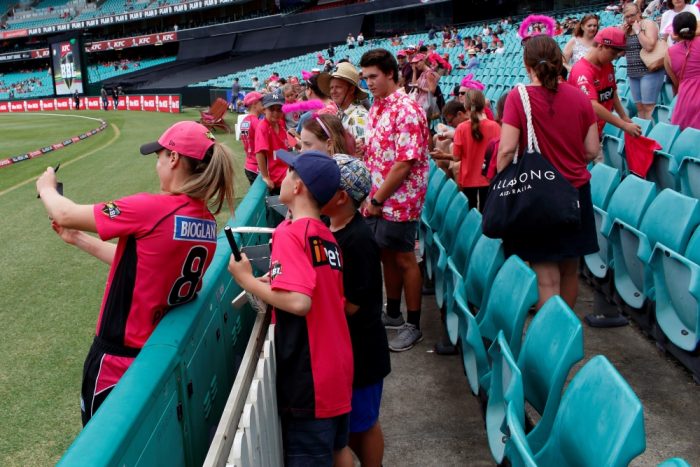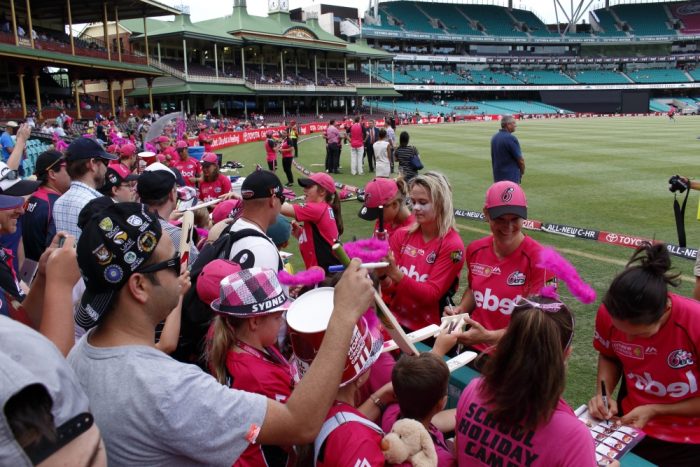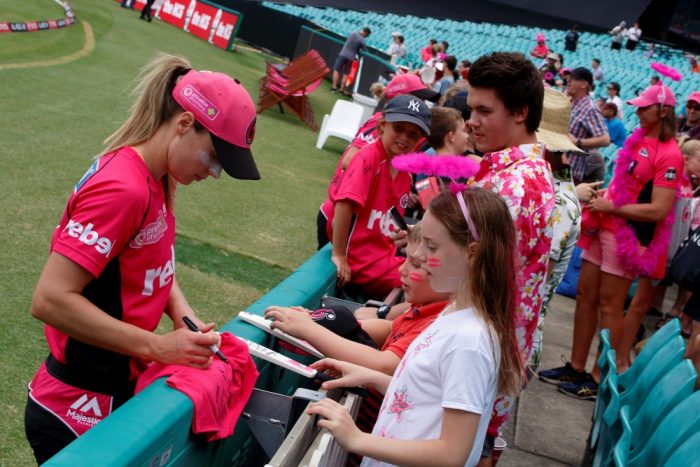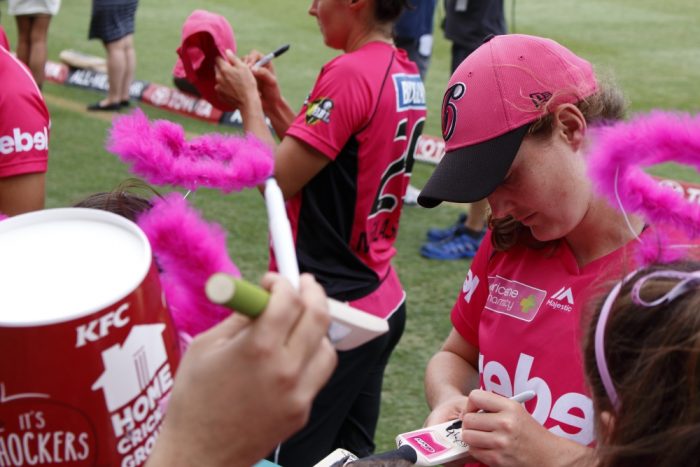Angry sky. Filtering gloom through a sense of foreboding. My work continues.
-
Filtering Gloom
-
Time According To Window Washers
Working and writing from home today. Measuring time by the progress of the window cleaners across the street.
-
Boots for escaping malaise
I’ve been experiencing malaise for the past couple of days – melancholy but without the sadness. The balance of my life has tipped toward more input and less output. This is never the way I want this scale to tip and yet here I am, mired in unproductive worry.
Into this malaise entered this image from one of my favorite photographers, Alice Gao:
View this post on InstagramThe image is but one example of the inputs that have begun to outnumber my outputs but it is perfect enough to help me break that seemingly inescapable loop. Case in point: in writing this very blog post about the image, I’m finally generating some output.
The image is deceptively simple. Color has been shifted to black and white; the head and face of the subject can’t be seen; even the action being performed is unclear – is the boot being put on or removed by the subject?
Context has been stripped to these and other ends but just enough is left to allow for infinite possibilities; myriad interpretations. The subject as exhausted worker just returned home, the subject as lover mere moments from crawling into bed, the subject as shopper – lonely or loved or both – checking the boots for fit or style.
Or perhaps these are merely boots built for escaping malaise.
[contentblock id=1 img=gcb.png]
[contentblock id=2 img=gcb.png]
[contentblock id=3 img=gcb.png]
[contentblock id=4 img=gcb.png]
[contentblock id=5 img=gcb.png]
-
Notes From A Day At The Women’s Big Bash League (WBBL)
I had the great pleasure of attending the Sydney Sixers vs. Perth Scorchers Women’s Big Bash League (WBBL) match at the Sydney Cricket Ground (SCG) on Monday. Any day at the cricket is a good day, but seeing the Sixers in action means I get to see Alyssa Healy and Ellyse Perry – two of my favorite players in any code – do some work. Their partnership was in exceptional form against the Scorchers, laying the foundation for what turned out to be a rather easy run chase. The match did come down to the final over, but one got the sense that the Sixers were merely biding their time. The win extended their running win streak to six matches.

Ellyse Perry on selfie duty with the faithful. This was my second WBBL match – the first being the Sydney Derby at the SCG last year – and it’s encouraging to see how far the league has come in such a short amount of time. Last year marked the first season for the new league and Cricket Australia (CA) put a considerable amount of effort into the launch, maintaining “brand” consistency (the women and men’s teams are both the ‘Sixers’, ‘Scorchers’, etc.) and using promotional tactics such as double-headers to raise awareness of the women’s matches and the skill being displayed within. The match I attended last year was one such double header, as was the match on Monday.
The broadcast of a minimum number of women’s matches is dictated in the deal CA have drawn up with Channel Ten, and this has resulted in impressive ratings that even in the WBBL’s first season were arguably higher than those of the A-League, Australia’s domestic soccer competition. In this, the second year of the league, every match is also streamed online with full commentary and production.
Still, the true value of the WBBL is the impact that today’s players are having on tomorrow’s at the grounds themselves. Most WBBL matches are played at suburban grounds and are events unto themselves.* Admission is free and the matches take place during the day over the school holiday period. This means a young woman living in Hurstville or North Sydney can quite literally walk down the street and watch her heroines – some of whom play first grade international cricket for Australia and other countries – do what they do best. That kind of access is unparalleled in professional sport, and the arrangement will pay dividends for the WBBL (and women’s cricket at large) in the generations to come.

A line of victorious Sixers signing autographs for girls and boys alike. There are still challenges in the short term, but CA seem to be addressing them. Last season’s BBL advertising rarely mentioned the women’s league, most glaringly when it came to the advertisement of the aforementioned double headers. This has been rectified this season, with WBBL players featuring prominently in shots of on-field action and the start time of women’s matches in double headers being included in the narration and graphics.** Other oversights remain, though, such as the fact that the shuttle buses from Central Station to the SCG don’t start running until a few hours prior to the men’s match, well after the women have started playing.
The game day experience is designed to be an encouraging one for young athletes and fans of both genders (there were nearly as many boys as girls seeking autographs from players after the match concluded). I’ve included a few photos of these interactions throughout the post, but numerous other examples abound on social media:
Look at that look….. #idol @crinny17…. The @wbbl inspiring the next generation #canetrain 🌪 pic.twitter.com/KmiZZIA7yz
— HurricanesWBBL (@HurricanesWBBL) 10 January 2017
Clearly CA recognise the potential reach of social media, as they’ve also used Facebook to serve advertisements that very clearly illustrate the heights to which young female cricketers can aspire:


The message at the stadium is likewise clear: the opportunities for girls are there. Video profiles of star players featured on the stadium screens during down time, encouraging young cricketers to ‘give it a go’ (and rather explicity, at that – the tagline at the end reads “Inspiring young women to play cricket”). This profile of Megan Schutt is particularly powerful and leads off with a reflection on how far women’s cricket has come in just her lifetime:
It’s hard to imagine a young female cricketer with aspirations of playing on the world stage not being inspired by what she sees when her eyes are on the WBBL. I’m not female or altogether young (as compared to a ten-year-old, anyway) and yet even I find it all very empowering and uplifting.

Ellyse Perry interacting with a potential WBBL star of tomorrow. The WBBL isn’t the beginning and end of this progress, either. Other breakthroughs are being made for women’s cricket, such as the NSW Breakers (the New South Wales state side) recently becoming the first fully-professionalised women’s team in any code in Australia. Commonwealth Bank has also recently announced that they will be changing the nature of their financial support of CA, a shift that will see money pumped directly into programs for female, indigenous and disabled cricketers.
It’s an exciting moment for women’s cricket in particular and for women’s sport in general. It’s easy to see how these moves toward gender equity at the highest level of cricket in Australia will yield parallel positive changes in other sports and society at large. Whether or not today’s young female cricketers go on to WBBL careers, they will still enjoy the robust social and developmental benefits that come with playing sport. That’s an important legacy to establish, and it all starts with the Perrys, Healys and Schutts who are out there doing work today.
*Much to my disappointment, I have not yet been able to attend a standalone WBBL match. I hope to rectify this by attending one of the final two Sixers matches of the year at North Sydney Oval on 20th and 21st January. I encourage you to do the same!
**Although the inclusion of women in the advertising is welcome, my wife rightly points out that the wording can be improved. Presently the message is “come early and catch the women” when really it should be about attending the women’s match full stop, not “coming early” for the men’s match. This frames the women’s match as an ‘opening act’, which is rather demeaning (if we want to read into things).
About designing sport for development
This post relates to my PhD project at the University of Technology Sydney. My research aims to use intentional design to maximise the social outcomes of youth sport for development programs.
You can follow along with the project on Twitter Follow @gregjoachim or use the contact form to get in touch with me directly.
-
Having Read His Future In The Clouds
From this great height it seemed as though the sun would never set. He smiled. Having read his future in the clouds, he could look forward to the eternal sunshine ahead.
-
The Broadcast Violence Was Thusly Amplified
He was watching the news. Something bad was happening in Syria.
She was in the other room getting undressed. She thought about what she had just read on her phone. Something bad was happening in Syria.
She used the master control to turn off the lights. The apartment fell dark and this had the effect of making the television seem somehow brighter. The intensity of the broadcast violence was thusly amplified. Something very bad was happening in Syria.
The television was muted. The only audible sounds were those made by the passing traffic twelve stories below and the impact of her bare feet as she walked toward him across the carpeted floor. She was wearing only a pale blue bra and matching panties. The light from the television danced across her bare skin. It was performance art. He was a captive audience. The pale projection of an explosion reflected across the small of her back. Something very bad was happening in Syria.
She straddled his lap and put her hands on either side of his face. The kiss that she gave him made him think of the first time they had kissed. Her lips had been pillowy then. Her lips were pillowy now. Her body was warm. His body was warm. She turned off the television.
Something good was happening.
[contentblock id=1 img=gcb.png]
[contentblock id=2 img=gcb.png]
[contentblock id=3 img=gcb.png]
[contentblock id=4 img=gcb.png]
[contentblock id=5 img=gcb.png]
-
Why We Should Take Each Other Seriously
Do you want to be taken seriously? I would have a difficult time imagining that you don’t.
The desire to be taken seriously is the fuel that powers strange personality traits that you’ve likely observed in yourself and others, including:
- Your Facebook friends who meticulously curate their online presence in an effort to appear as if they have their shit together. Pay no attention to that man behind the curtain, Dorothy.
- People who are “busy”. They’ve just had a lot on, you know? Things are crazy with the kids and there’s this huge project at work that only they can do properly so there go their weekends! Last seen opening a second bottle of white wine at 7:00 on a Monday night because “cheat day!”.
- “Fanboys” who surrender a not insignificant portion of their identity to interests they can not directly participate in or outcomes they can not meaningfully impact. Depending on the selected devotion, this can assume the shape of either hipster escapism or – more typically – living vicariously through the success of others (see: devout fans of sports teams, athletes, bands, artists, etc.).
- This phenomenon can also be observed in:
- Those who dedicate themselves fully to a job they don’t believe in.
- Those dedicated to being a “present” parent to the point of having no individual identity outside of this pursuit. When asked how they are, these parents will tell you how their kids are doing.
- This phenomenon can also be observed in:
It would be unfairly reductive to say that the desire to be taken seriously is the sole cause of these and other, similar behaviors. That’s not the point I wish to make. Rather, I would like us to turn the mirror back onto ourselves. How seriously would you (or do you) take people who fall into one of the categories listed above?
None of us is more important than anybody else. This isn’t a revolutionary idea. It’s safe to say that a large majority of the human race believe this to be true on at least a philosophical level. Not many people would claim to be superior to others; above the fray. To believe that you are better than anybody else – that there is anybody “not worth your time” – is a particularly off-putting brand of solipsism.
That said, observed human behavior (which may include your own) would seem to suggest that such espoused beliefs may be merely rhetoric. If none of us thinks that we’re better than anybody else, why are we routinely jerks to one another?
The problem is introduced when we must adhere to this philosophy in real life.
Talking about being fair is easy. Meanwhile, doing? Well, don’t we all have enough to do already?
What does this kind of behavior look like?
- Any number of aggressive traffic maneuvers. Nobody needs to get to their destination as urgently as you!
- Elbowing in front of kids on train station escalators. Kids aren’t really people, right? Where do they have to be that’s so important? They have their whole lives to get to the top of the escalator!
- Spilling some coffee on the counter of the office canteen but leaving it for somebody else to clean up. That’s what interns are for, right? You? You’re late for a meeting!
You get the idea.
In all of these instances, the “bully” (let’s just call the behavior what it is, even if I’m stretching the definition past the inherent intentionality) considers nobody but themselves. Are they doing this to be a dick? Hopefully not. Most times, they’re probably perfectly nice people. So how does this happen? Where do nice people go wrong?
Inside their minds – unseen to all, including (usually) themselves – a complicated calculus is determining their actions. This calculus can be conceptualized as a flow chart of sorts; the reduction of complex social and natural scenarios to a ruthlessly efficient series of tripwires and routinized responses.
The result? They elbow in front of kids on the escalator not because they closely examined the children and considered their adolescent circumstances to be of only marginal importance when contrasted against those of the adults about, but because they didn’t think about the kids at all.
They thought only of themselves.
This type of behavior is indicative of a profound lack of regard for the needs of anybody but the self. We can look each other in the eye and claim to be selfless and socially responsible citizens who have time for everybody because that internal calculus – that ruthless flowchart – that controls our actions like a fanboy controls Lara Croft allows us to effortlessly maintain sufficient cognitive distance between effect and cause. We behave like jerks and let ourselves off the hook because, well, we didn’t mean to hurt anybody.
This is where the allegedly universal philosophy – believe it as we may – falls over entirely.
Being passively rude to strangers is bad enough but it is merely a symptom and not the disease (depending on the circumstances). The problem truly becomes a tragedy when we allow it to creep into our interpersonal relationships.
Over the last ten years I directly managed somewhere in the neighborhood of a thousand staff, almost all of them younger than me and still pursuing undergraduate degrees or – more generally and with mixed results – “being twenty something”.
I had hundreds of encounters with these staff members while they were under my management, but one sticks out in my mind. This staff member found me after her shift one day and presented me with a gift. It was nothing fancy but it was very thoughtful (when selecting the gift, she had recalled a funny moment we had shared at work) and completely unexpected.
What had I done for her that she felt warranted this gift? I had seen that she was having a bad day and I asked her if she was okay.
No other staff member ever presented me with a gift, and I did my part to assist as many as I could. I had helped many with interpersonal problems they were facing, wrote letters of recommendations that helped some earn better jobs or places in their university, and just generally made myself available to them.
Sincere thanks was always offered for my assistance to those ends but the person who went beyond a mere “thank you” did so because I had done something she truly valued: I had taken her seriously. As repayment, she took me seriously.
Of those hundreds of staff interactions, this is the one that I still remember; that I still take seriously.
More recently I’ve begun tutoring at the University of Technology Sydney and in two years have directly worked with about 500 undergraduate and graduate students, the vast majority of whom are in their first year of study at their respective level.
At the end of each semester, these students are invited to complete anonymous student feedback surveys in order to help us improve the class for future students. One open-ended question on this survey asks what elements of our tutorials they particularly enjoyed or found useful. Many use this opportunity to explicitly acknowledge my acknowledgment of them. They go out of their way to thank me for taking them seriously.
The things I’ve done that they thank me for? Responding to emails, providing assistance ahead of assignment submissions, not playing favorites, and offering useful and constructive feedback on assignments. If you’re thinking that this list sounds like all the things that any teacher should be doing, I would agree with you.
Don’t mistake this anecdote for a low key explainabrag. The entire point is that I’ve merely taken my students seriously and they’ve responded in a way that suggests this type of behavior is not something they regularly encounter. Those of us who are willing to recall our undergraduate years honestly will probably sympathize with their situation, and it’s (sadly) telling that this feedback is only offered anonymously. Clearly there is some level of shame associated with feeling like we’re not consistently being taken seriously.
The way to undo this – to move toward a more respectful society that makes progress because of and not despite the presence of others – is to embrace self-awareness rather than self-absorption.
One of the most difficult obstacles to achieving this is – as I already mentioned – time. By and large we are busy people these days. To stop and give everybody our undivided attention and selfless devotion is not practical. Fortunately, it’s also not necessary.
To be merely aware as you move about the world would be to go a long way toward taking others seriously. To not elbow in on escalators. Not because you take the time to critically analyse the needs of the people whom you would be cutting off, but because you’re operating on the assumption that your needs are no more important than anybody else’s.
Herein lies the simple, overarching truth behind all of this: taking others seriously is not an active task that consumes time and energy. It’s actually as passive as not considering them at all. The difference is a fundamental shift in the baseline of your own awareness: to not rush, to not be aggressive, to not assume that your needs are more important; that you are more important.
If I took the time to actively integrate myself into the lives of my students, there would not be enough hours in the day. Further to that logistical obstacle, my introversion would cause me to collapse in a heap even as I explained how to construct a rigorous thesis for an academic essay.
To take others seriously is not to insert yourself – it’s to leave the door open. Of the 35-40 students I have in any one class, only two or three will ever take me up on my offers of extensive assistance. Maybe ten will email me at least once – usually about a question relating to attendance.
If I didn’t take them seriously? If I operated on the assumption that their undergraduate needs were inferior to my postgraduate needs and thus only relevant within the 80 minutes I’m paid to stand before them in a classroom? It would be no different to elbowing in front of them on an escalator. I wouldn’t have seen them in either scenario. I wouldn’t have taken them seriously.
Instead, I make the choice that you should also make: I take them seriously. I offer them the world and a few approach me to claim it. They respond to my taking them seriously and they take me seriously in kind. Once we find each other, there’s no need for curating our lives or surrendering pieces of our identity. We take each other as we are and we move forward.
As we all should.
-
An Undergraduate Refilled Their Glasses
Neither of them moved or spoke. An undergraduate refilled their glasses. The horn of an unseen car honked succinctly, providing an auditory punctuation that neither of them could muster.
-
Short Story: Modifications Politely Declined
My latest short story Modifications Politely Declined has been featured on The Regal Fox.
He wouldn’t have noticed her if she hadn’t been smoking a cigarette. That she was doing so while seated directly under a sign that read ‘Thank You For Not Smoking’ made him feel strangely anxious.
The barista announced that a flat white was ready for ‘Kyle’. This was the incorrect interpretation of his name that he had by now learned to listen for. This made him a better listener than the very high “dude” taking orders but that was of little comfort on this particular morning.
He claimed the mislabeled cup and scanned the room for an available seat. There was a vacant stool across the table from the smoking girl but he wasn’t particularly interested in sharing a table with a stranger and he was less interested in sitting within her cloud of smoke.
Rough timber boards traced the bottom of the walls, giving way here and there to too-small seats attached to the wall with too-rusty hinges that looked ready to buckle at any moment. The interior designer responsible for all of this had overshot both ‘authentic’ and ‘vintage’ and landed instead on ‘dilapidated’.
Not one of these rickety seats was empty. Nor were any of the cushioned couches that lined the wall just inside the door of the café. Nor were any of the milk crates that doubled as furniture on the front sidewalk. Annoyance blossomed into heartless surrender as he accepted that the stool across from the girl was the only free chair in the cafe.
He turned to reassess the stool’s availability and saw that the girl was watching him with a placid expression. She took a drag and then exhaled smoke, studying him dispassionately all the while. After a few seconds she motioned to the stool with the hand that held her cigarette. To not join her now would be deliberately rude.
She watched him take the two or three steps across the wooden floor and she kept her eyes trained on him while he sat his coffee on the small table and leaned his bag against the legs of the stool. He finally sat before her, unbuttoning the jacket of his suit as he did so.
Continue reading on The Regal Fox…
This JimmyGoodWords is fiction.
[contentblock id=1 img=gcb.png]
[contentblock id=2 img=gcb.png]
[contentblock id=3 img=gcb.png]
[contentblock id=4 img=gcb.png]
[contentblock id=5 img=gcb.png]
-
Heartbreak Dulled His Senses
She was sitting on the upper level of the train. He couldn’t see her face from where he was standing but he could see that her hair was auburn colored.
It was enough. He was in love.
It was easy and pleasurable to imagine meeting her in the city after work. He would take her to Dymocks and she would rest her head on his shoulder as he introduced her to his very best friends: Scott Fitzgerald and George Orwell.
It was Thursday, so they would stay out later than usual and have dinner. They would most likely go to the Thai place he really liked. He was convinced she would like it, too.
The train pulled into Central and he knew he had to step off of the train and out of her life. He did, and the day that followed was cloudy and overcast with regret. He spent the train ride home wondering why he wasn’t meeting her in the city. Why had he not introduced himself to the love of his life?
He made macaroni and cheese for dinner and went to bed early. Heartbreak dulled his senses enough that he fell into a deep sleep.
He tried not to think of her as he stepped onto the train the next morning. The carriage was crowded. The scene was the same.He could see a girl sitting on the upper level of the train. He couldn’t see her face from where he was standing but he could see that her hair was strawberry colored.
It was enough. He was in love.
